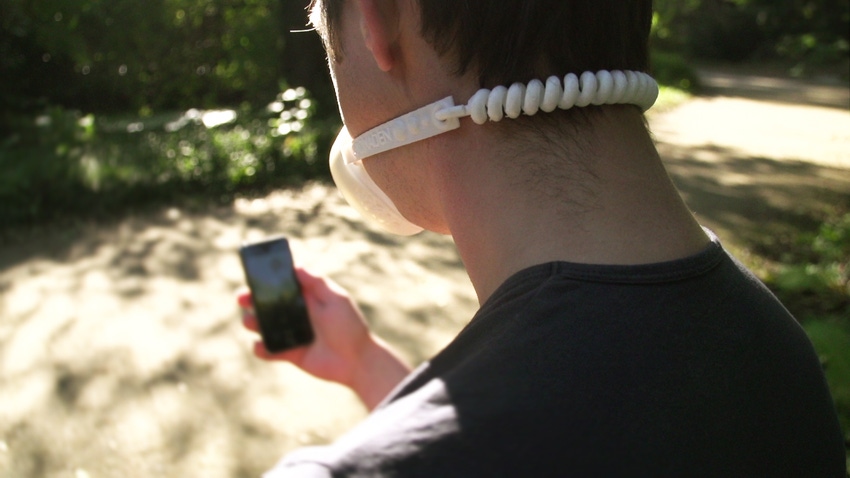We’ve all seen the pictures of people in Asia wearing face masks as they commute to work, go shopping or simply taking the dog out. If the latest data are anything to go by, they are smart to do so: every year, outdoor air pollution contributes to the deaths of an estimated 1.6 million people in China alone.
November 4, 2015

This was the outcome of a study conducted by California-based Berkeley Earth, an independent non-profit organization that uses statistical techniques to analyze environmental issue, that was published in August of this year. According to this report, entitled “Air Pollution in China: Mapping of Concentrations and Sources,” air pollution kills an astounding 4,000 people every day in China or the equivalent of 17% of all China's deaths. The most harmful pollution is PM2.5, particulate matter 2.5 microns and smaller, which penetrates deeply into lungs and triggers heart attacks, stroke, lung cancer, and asthma. Berkeley Earth analyzed hourly measurements of 1,500 ground stations covering 4 months. The fact that sources of PM2.5 matched those of sulfur implies that most of the pollution comes from coal. Building on these results, the organization is now seeking to expand the geographic coverage to include more of Asia, the US, and Europe, and to study how sources of air pollution change with time.
Berkeley Earth analyzed hourly measurements of 1,500 ground stations covering 4 months. The fact that sources of PM2.5 matched those of sulfur implies that most of the pollution comes from coal. Building on these results, the organization is now seeking to expand the geographic coverage to include more of Asia, the US, and Europe, and to study how sources of air pollution change with time.
A company with firsthand experience of living with the problem of dirty air is the Shanghai startup, Sendinaden, one of this year’s winners in the Grants4Apps accelerator program, organized by Bayer to provide support in developing and commercializing innovative health products. The startup not only received financial support, but had the opportunity to spend three months working with at the Grants4Apps Accelerator at the headquarters of the company's pharmaceutical division in Berlin.
“In Asia, city-dwellers are faced with challenging environments that are both polluted and stressful,” said David Hartmann, CEO and founder of Sendinaden. The company saw an opportunity, and developed a wearable electronic device called the Pattern Breathe Mask, which will launch in January 2016. The Pattern Breathe Mask, says Sendinaden, improves health by changing breathing patterns. Because the mask is 3D printed, it is customized to each user. The mask filters the air—the exchangeable HEPA filter cleans the air of particles down to PM2.5—while measuring the user's breathing and giving real-time feedback. It communicates wirelessly with the accompanying  smart-phone app.
smart-phone app.
“Stress and breathing are highly interconnected,” explained David. “When we breathe too fast or too shallow we add to the existing stress in our bodies and this can cause serious health problems. It’s a two-way relationship. When we breathe well, we reduce the stress on our body from outside influences. We make better decisions at work and we sleep better. Good breathing is the cornerstone of a healthy and happy life.”
Consumer Electronics represents a USD1 trillion industry, one that is currently served entirely by injection molding. Riding the ‘mass customization’ trend, where each product is unique to each user, Sendinaden, is betting that 3D printing will upend the way consumer electronics are being brought to market today.
"For niche devices, the fixed costs of coming to market and working with a large OEM means that bringing such a product to the consumer is nearly impossible. By getting the consumer to 3D print everything except for the electronics module, we can customize a solution for each consumer and at the same time reduce costs,” explained COO Vivian Hartmann.
“Wearable technology represents a completely different paradigm that is best served by 3D printing," added David. “We see a consumer experience where you walk into a retail outlet, get a Pattern Breathe Mask curated and customized for you, go shopping and come back 45 minutes later to pick up your finished 3D-printed mask.”
The mask is made up of a 3D-printed casing, front panel, and strap, as well as an encapsulated electronics module. The strap is printed with Shanghai-based Polymaker's PolyFlex, a highly flexible 3D printing material, ensuring the mask is comfortable to wear. The casing and front panel are both printed in PolyMaxPLA, a tough, durable PLA that is safe on skin, a prerequisite for a product worn on the face. Mass Portal provided Sendinaden with the 3D printers required to manufacture the masks.
Sendinaden’s main goal is to improve the public’s breathing ability. David: “We’re passionate about bringing better breathing and, in turn, a better quality of life to all kinds of people, but particularly to city dwellers in Asia who face a long commute. They’ve got long periods of down time, and that time is being spent in a high pollution environment where they’re going to wear a mask anyway. It makes sense for them to take advantage of that time to change their breathing habits.”
Sendinaden is also exploring other customer needs including the diagnosis and treatment of sleep apnea and usage for drug delivery & pulmonary rehabilitation.
About the Author(s)
You May Also Like


